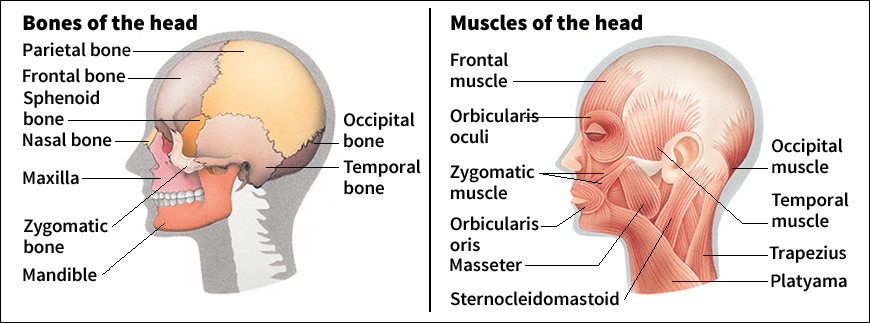Skull is the bony frame of the head of human beings and other vertebrates (animals with backbones). It is a case made up of bones that enclose the brain and bones that form the face. The human skull has 22 bones. Eight bones enclose the brain and make up what is called the cranium. These eight bones are called the cranial bones. The cranial bones include the occipital, at the back of the skull; the sphenoid, at the base of the skull; two parietal bones, at the top and sides; two temporal bones, above the ears; the frontal, at the forehead; and the ethmoid, at the nose. The other 14 bones of the skull form the face and the jaw. They are called facial bones.

Except for the mandible (lower jawbone), all the skull bones of an adult form a rigid, united structure. But the skull bones of babies are still growing and are soft where the bones join. These soft areas are called fontanelles. After a few years, the bones grow together in a hard, zigzag joint called a suture.
Animal skulls are shaped in ways that help a particular animal feed and survive in its environment. For example, a wolf or cat has long jaws and strong, sharp teeth that are used to grasp and tear its prey. A horse’s broad jaw and flat-edged teeth are shaped for cutting and grinding grasses and plants. A whale’s streamlined skull is suited to the animal’s life in the water.
